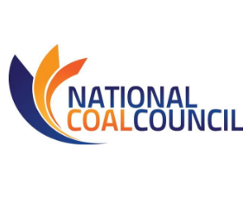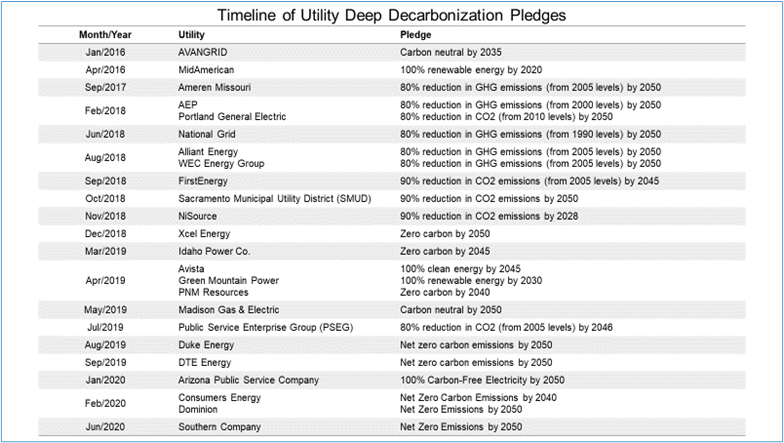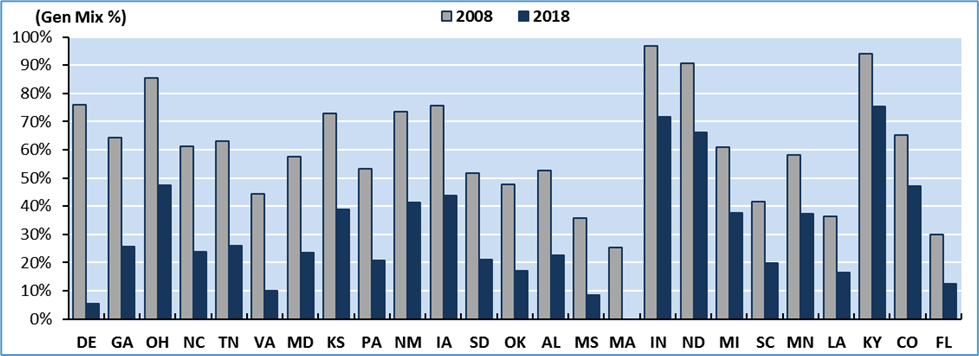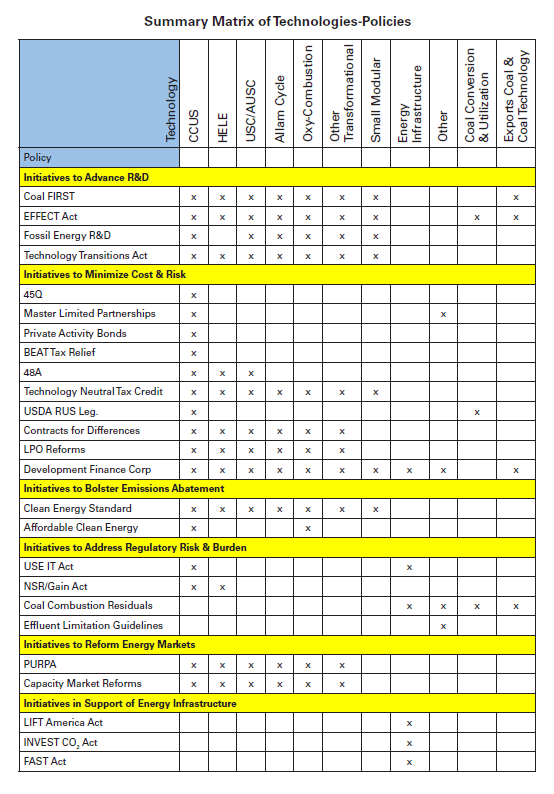Smart Policies for Cleaner, Stronger COAL POWER American Coal Council

By Janet Gellici
February 13, 2021 - The COVID-19 pandemic has prompted a re-assessment of the reliability and resilience of critical sectors of our nation’s economy, including U.S. energy systems. The COVID experience has reinforced the value of diversity of supply chains and the need to shore up our domestic-based resources.
Fuel-secure coal generation, critical to the U.S. power grid, is threatened by significant retirements and plans to decarbonize power generation. Since 2010, more than 40 percent of the nation’s coal fleet has been or is planned to be retired. A growing number of states and utilities have set carbon reduction goals to be met by mid-century or sooner.
Meeting environmental goals with affordable, reliable energy will require deployment of low or decarbonized power systems. The U.S. lags other nations in deploying cost-effective, advanced coal generation technologies, often due to energy policies that insufficiently incentivize commercialization of these technologies.
In July 2020, the National Coal Council (NCC), an industry advisory group to the U.S. Secretary of Energy, released a report1 for Secretary Dan Brouillette recommending federal and state policy initiatives to support advanced coal generation technologies. The Council’s COAL POWER report highlights an abundance of initiatives that could incentivize private sector engagement to deploy these technologies, reducing costs, risks and adversity.
The Urgent Need for Advanced Coal Generation Technologies
Advanced coal generation technologies have a significant role to play in meeting our national security, economic, energy and environmental objectives. These technologies, with applications for both the existing coal fleet and new coal generation, include carbon capture, utilization and storage (CCUS), high efficiency-low emissions (HELE) technologies, and transformational technologies with potential to achieve near-zero carbon emissions.

Many state governments and power generators have established low-carbon or decarbonization targets to be achieved between now and 2050. Existing policies will not incentivize deployment of advanced coal technologies at scale and in time to achieve these objectives. There is an urgent need to undertake initiatives that will:
- Lower the cost and performance risks associated with advanced coal technologies through learning by doing at large-scale demonstration and commercial projects.
- Eliminate deployment bottlenecks created by inadequate supportive energy infrastructure, such as carbon dioxide (CO2) pipelines and storage sites.
- Foster commercialization of next-generation coal power plants that can compete on cost and environmental performance with low-carbon resources.
Three critical milestones need to be met over the next 20 years to achieve mid-century carbon reduction goals:
- By 2030, retrofit a critical mass of existing coal power plants with carbon capture and efficiency-enhancing technologies, more fully demonstrating their viability, maturity and availability.
- By 2035, establish a growing network of CO2 storage sites and pipelines approximately five times larger than what exists today.
- By 2040, a variety of new coal plant technologies must be commercially available, cost-competitive and have a near-zero emissions profile.
These objectives are achievable if an aggressive agenda is pursued that acknowledges the urgency of the need and the economic-environmental implications of not meeting these goals, both in the U.S. and globally.
Federal Regulatory and Legislative Initiatives
NCC identified a significant number of federal policies and initiatives for providing a path to cleaner, stronger energy. The accompanying Summary Matrix of Technologies-Policies on page 31 provides an overview of how specific policy initiatives currently in play would enhance deployment of the advanced coal generation technologies reviewed in the COAL POWER report.
Recommended initiatives include:
- Enhanced Support for U.S. Department of Energy (DOE) Research & Development (R&D). DOE’s R&D programs would benefit from more flexible and expansive authorization, most notably for demonstration and commercial-scale initiatives that could bridge the “valley of death” gap between basic research and commercialization.
- Initiatives to Minimize Cost and Risk. A recent Energy Information Administration analysis2 found that between 2010 and 2016, federal financial support for fossil energy significantly lagged that for non-fossil energy – 5.2 percent for fossil vs. 63.1 percent for non-fossil. Numerous regulatory, legislative and tax initiatives would provide financial support, while minimizing risk and incentivizing the commercialization of advanced coal technologies.
- Initiatives to Bolster Emissions Abatement. Policy initiatives could enhance efforts to achieve CO2 and criteria emissions reductions, including those that provide a substantial increase for clean energy R&D funding and allow a regulatory pause for a period of time to allow these technologies to reach a commercial stage.
- Initiatives to Address Regulatory Risk and Burden. Regulatory uncertainty, risks and burdens have contributed to recent decisions to retire coal power plants or reduce investments in plant maintenance and technology upgrades. Reforms could reduce the time and expense associated with regulatory compliance.
- Initiatives to Reform Energy Markets. Steps must be undertaken to acknowledge and compensate the U.S. coal fleet’s reliability and resiliency attributes that ensure
the availability of firm, dispatchable power. Valuing fuel-secure, dispatchable generation would encourage deployment of advanced coal technologies.
- Initiatives for Supportive Energy Infrastructure. Energy infrastructure policies could facilitate deployment of demonstration and commercial-scale energy projects, characterization of geologic storage and enhanced CO2 pipeline capacity.

State Initiatives
Integration of federal initiatives with state policies enhances the chances of successfully deploying technologies in support of our nation’s energy and environmental objectives. State governments influence energy resource-related decisions through tax optimization, regulatory policies and financial incentives. State energy regulators and public utility commissioners (PUCs) are tasked with ensuring safe, reliable and affordable electric power for their state’s residents and businesses. Balancing these objectives has become increasingly difficult with the recent wave of coal power plant closures and changes in the U.S. power generation portfolio.
In states where intermittent renewable energy (IRE) has been added to power systems, utilities and Independent System Operators (ISOs) have to balance considerable amounts of variable generation with dispatchable, on-demand power from coal and natural gas. As more coal power plants are retired and more IRE plants are deployed, state energy regulators’ ability to ensure reliable power will be challenged. As noted in a recent report from the National Association of Regulatory Utility Commissioners (NARUC), operating the existing coal fleet in a cycling mode as a backstop to IRE increases coal plant maintenance and capital costs while reducing performance, adding to the challenges faced by state energy regulators responsible for retaining generating capacity at levels above peak demand and in compliance with state environmental mandates.
State energy regulators and policy-makers are positioned to initiate and support efforts that recognize and compensate the reliable and resilient attributes of coal power plants,
and help advance the deployment of environmentally beneficial coal generation technologies.
Measures could include:
- Clean Energy Standards. State Renewable Portfolio Standards have successfully mandated the deployment of renewable energy in many states. A handful of states have adopted a broader “clean energy standard” (CES) that includes coal generation with CCUS and low-carbon technologies. Qualifying CCUS and low carbon technologies as eligible options under a CES would accelerate and enhance their deployment.
- Low-carbon Credits. PUCs could implement low-carbon credit programs to include CCUS, similar to initiatives in Illinois and New York that incentivize nuclear power.
- Cost Recovery and Financial Support for CCUS and Low-carbon Technologies. PUCs in vertically integrated states decide what costs can be passed on to ratepayers as
“prudent” investments in electricity generation, transmission and distribution. Including CCUS retrofit costs as a prudent investment would create a favorable environment for utilities, enabling them to recover retrofit costs through rate bases and providing some regulatory certainty. States can also enable CCUS projects to participate in their Private Activity Bond markets which enable states to finance CCUS infrastructure at no cost or risk to the state itself.
- Siting and Permitting. State energy regulators and PUCs can encourage carbon capture deployment by pre-approving siting and environmental criteria, and working with stakeholders to streamline pipeline permitting. States can seek authority from the Environmental Protection Agency (EPA) to permit Class VI Underground Injection Control wells. To date, North Dakota is the only state with EPA approval to enforce its own Class VI program. Finally, states can clarify long-term liability issues associated with CO2 storage sites. Some states have passed legislation transferring liability to the state.
- Tax Treatment for Coal Projects. States can establish favorable tax incentives to support deployment of advanced coal technologies, including reduced sales/property taxes, exemptions and modifications.
- Planning. PUCs could issue guidance requiring consideration of carbon capture in integrated resource plans along with other forms of generation. Some states are also establishing procedures to evaluate the impacts of coal power plant closures on consumer costs and grid reliability, prior to approving plant shutdowns.

Finally, initiatives to accelerate the deployment of advanced coal generation technologies can be greatly enhanced through intra-state, regional and tribal collaboration. Within a state, collaboration among state government, university, industry, tribal and non-profit organizations are proving to be successful, as are collaborative efforts between states. One regional cooperative effort of note is the State Carbon Capture Work Group that includes 14 states focused on enhancing the deployment of CCUS technology and infrastructure in the Midwest and West.
Conclusion
Coal is essential to our nation. The U.S. coal fleet plays an indispensable role in providing reliable and resilient electric power. The U.S. must maintain a readiness, both in technology and human resources, to utilize our abundant resources to supply our critical energy needs. The policies and initiatives identified in the National Coal Council’s COAL POWER report can provide the U.S. with a cleaner, stronger energy future.
Janet Gellici is CEO of the National Coal Council.

